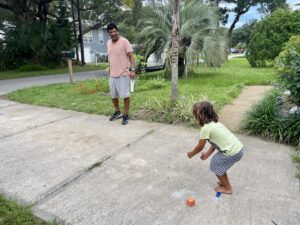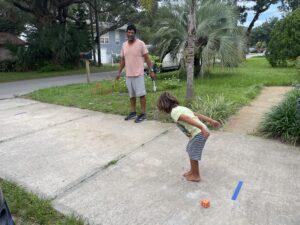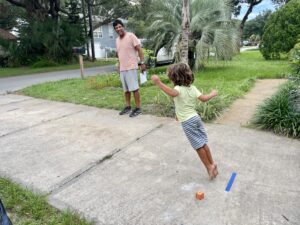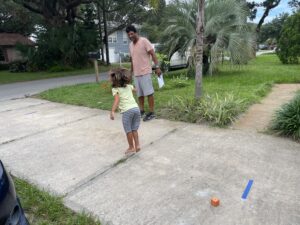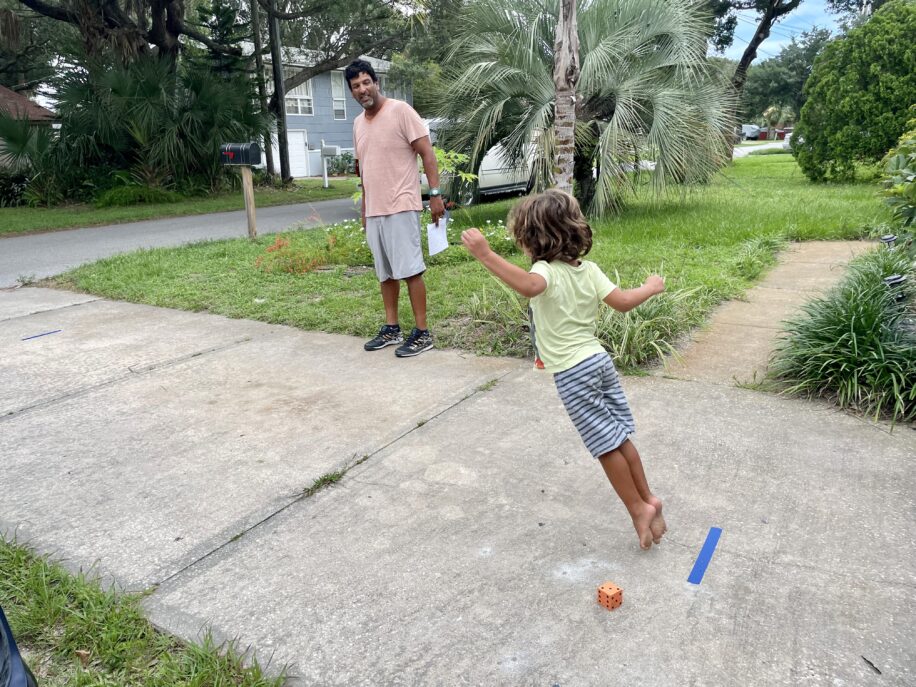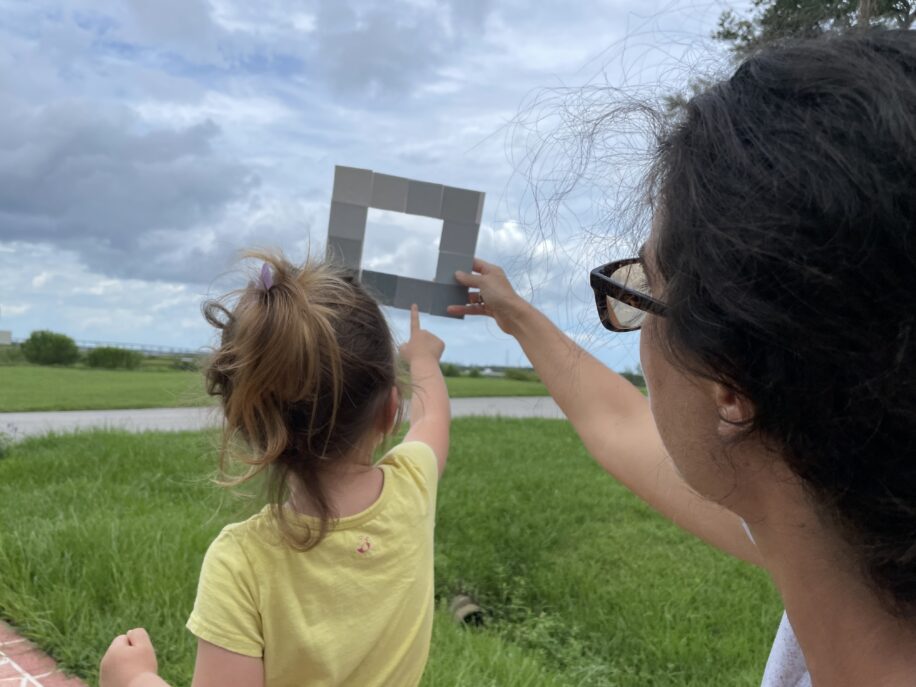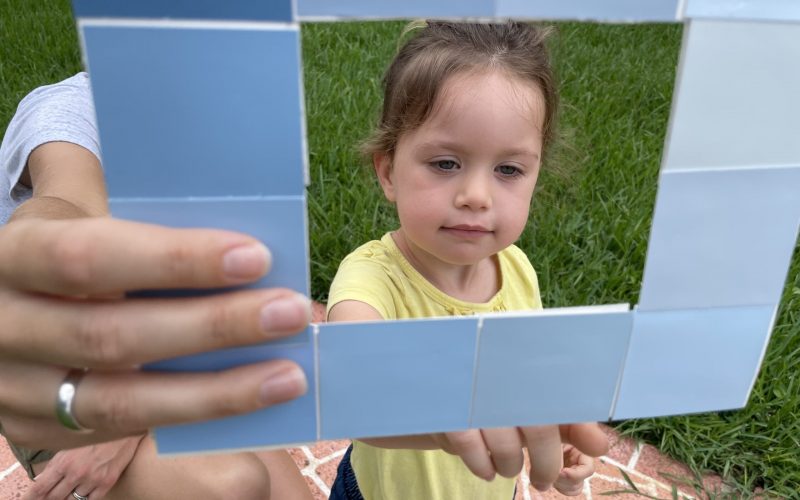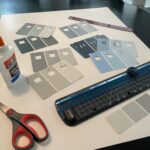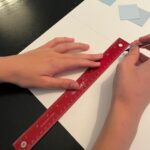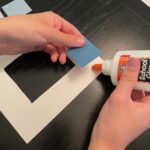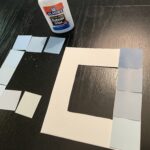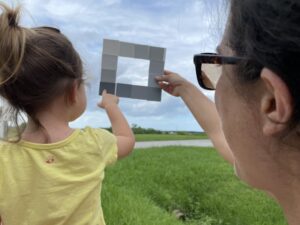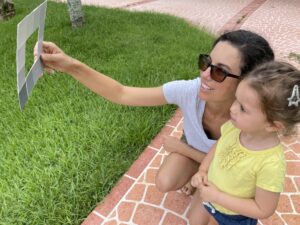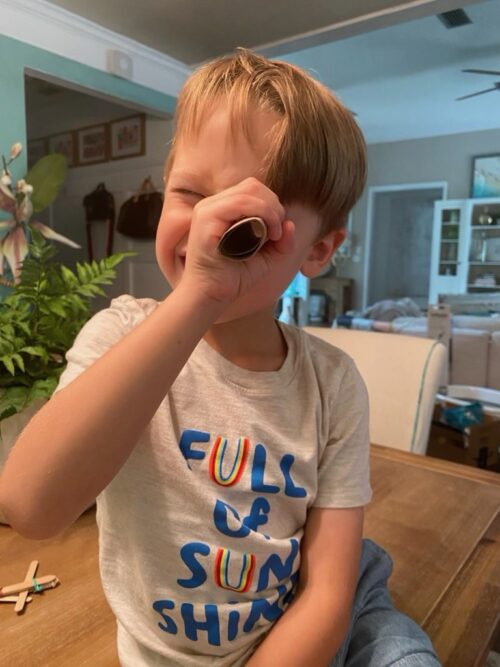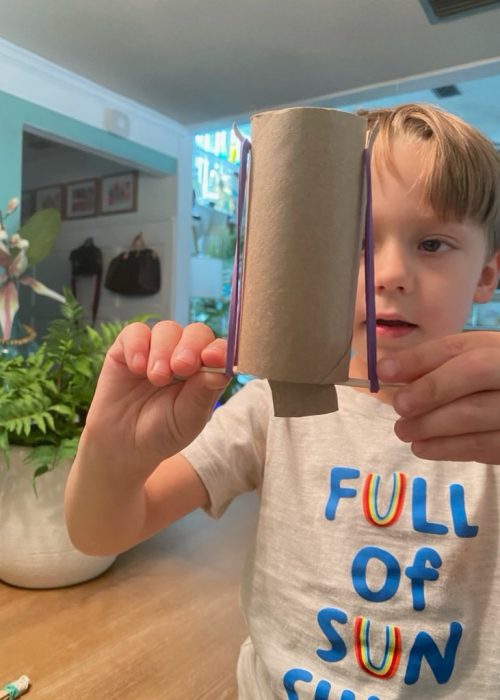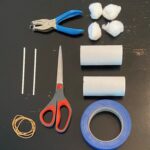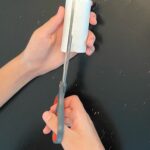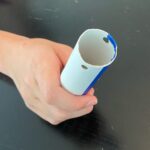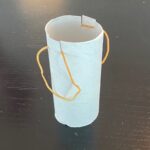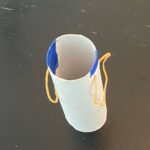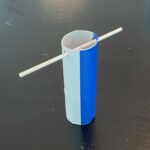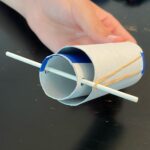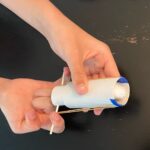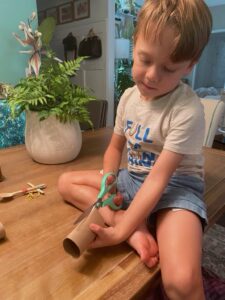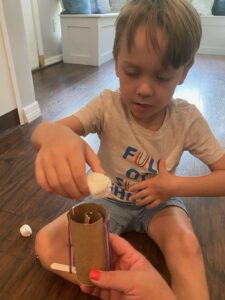
Time to get the kids outdoors for some physical and mental fitness, leaving their pathway to fun to the roll of a die! This fun game can be played with a friend as a race or with just one player to celebrate their athletic accomplishment. Kids will be exercising their muscles and coordination with a little adventure mixed in!
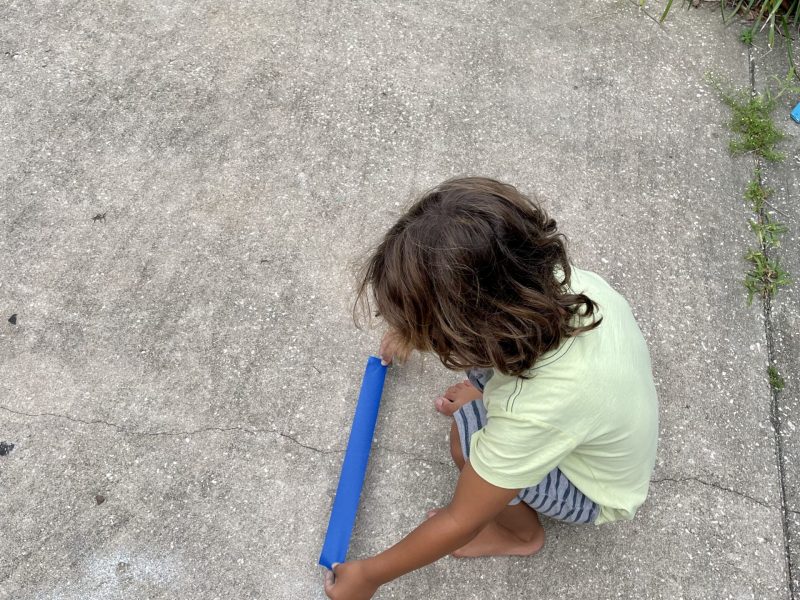
Materials Needed:
- Die
- Pencil & paper
- A space large enough for movement, like a lawn, driveway, or park area
- Tape or chalk
Step 1: Brainstorm 6 specific movements that would be fun, and slightly challenging to your child. Or choose from our list!*
- Jumping jack
- Hop on one foot
- Spin in a circle
- Bunny hop
- Banana split step (one foot in front of the other as far as you can go without putting hands on ground)
- Crab walk (put your hands on the ground behind you and without letting your backside touch the ground walk on all fours)
More Examples:
- Burpee (jump up, then crouch down, walk your hands out to a plank position, then walk your feet up to meet your hands and stand up)
- Backward Step*
Step 2: Write the six movements down on a piece of paper, assigning them each a number between 1-6.
Step 3: Determine a Starting point in an area and mark it with tape or chalk. Then, count off 15-20 giant steps and mark a “Finish” line with the tape or chalk.
Step 4: Roll the first die to see what movement* you get, and then roll the second die to see how many of those movements you must do in order to move toward the finish line.
For example: Rolling a #5 and a #6 would mean you take 6 Banana Split steps forward.
*Note: (some of the moves can create forward progress, some will keep you in the same position, and others could push your position back)
